
New Photos
August 27, 2006
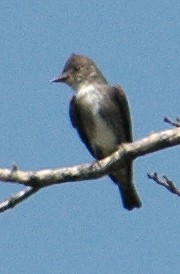 |
|
| Olive-sided Flycatchers, Contopus cooperi, nest in coniferous forests far to the north. This is the first one I've seen in August down here. It was hunting from tall "snag" perches on both sides of the SW meadow. | |
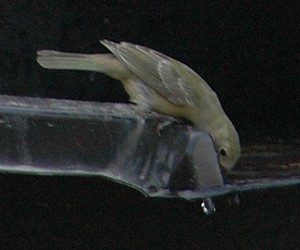 |
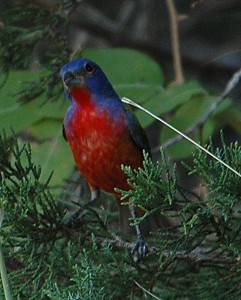 |
| Birds vary in where they want to drink from a water source that offers variety. This young Painted Bunting likes to drink from either the flow-over rock, or the outlet of the first basin. | Male Painted Buntings are cautious...this one isn't sure he wants to come closer for food while I'm staring at him with the big eye of the camera lens. |
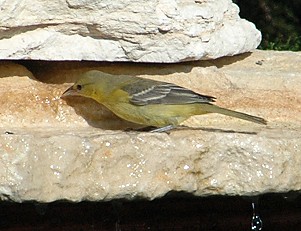 |
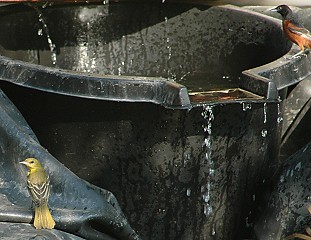 |
| The female Orchard Oriole, Icterus spurius, chose to drink from the stream coming out of the rock; the wet rock is probably cool to stand on, too. | Here both Orchard Orioles approach the top basin. The male, black and rust colored, it at the top right corner; the yellow female is near the bottom left corner. I was concentrating on the female, and didn't know the male was there until I brought up the image in the computer. They're supposed to breed in this area, but the only ones I've ever seen were single males appearing at the house in spring. The presence of a pair suggests that they have bred on our place, unless this is a pair migrating south. |
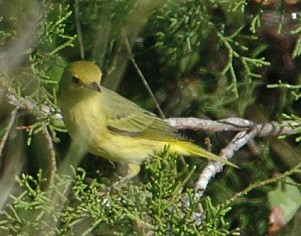 |
|
| Another fall migrant showing up earlier than expected was this Yellow Warbler, Dendroica petechia. We do see them most years, but only for a day or so during migration in spring...up at the house. Clearly, the SW meadow, so close to the creek woods and yet with open access and good cover, is attractive to fall migrants that arrive earlier than I thought. | |
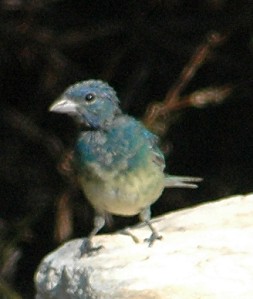 |
|
| This handsome little bird landed on the top rock of the Owl Pavilion water, but I got only two shots before it flew away. By comparing a picture of a juvenile Painted Bunting perched in almost the same place, and taken from the same place, with the same camera setting, I'm sure these birds are the same size, and the bill shape of this one is very like that of the Painted Bunting. So my best guess is that this is a male Indigo Bunting losing its breeding season plumage and coming through on migration. | |
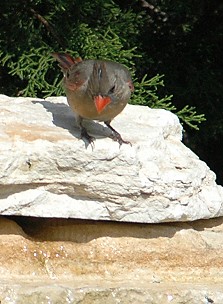 |
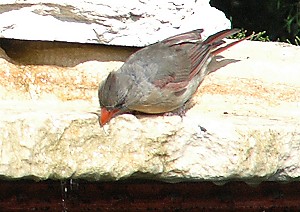 |
| A female cardinal investigates the spring. | A minute later, she's down on the ledge drinking from the stream of water as it flows over the edge of the rock. Two female orchard orioles were in the area, and came down as soon as the cardinal had left. |
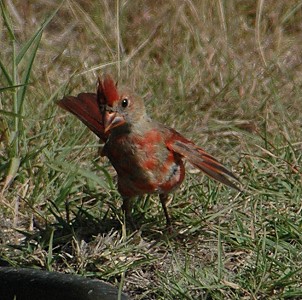 |
|
| A young male cardinal chose to drink from the least safe place--the end of a sunken tub where the water level is several inches below the rim and the rim itself is too wide for his feet to grip. He nearly fell in several times, but did not move to the tub where the water level was up to the top. What reveals that this is a young male instead of a female? First, the bill color--changing from juvenile black to adult red-orange, and second, the red patches on his breast and belly. A mature male molting may show this patchy coloration, but will have a solid red or orange bill. A female won't have red on the breast, and also has a solid orange bill (as in the one on the rocks.) | |
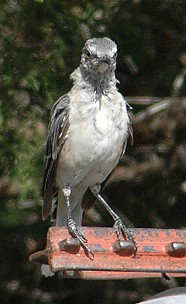 |
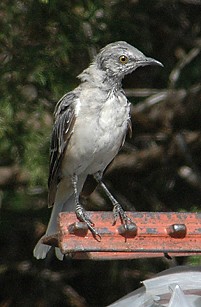 |
| "Who you lookin' at!" A mockingbird molting looks both ridiculous and annoyed. | "The next person who laughs is going to get it..." Mockers can look almost raptorial, and sometimes they act like it, too. |
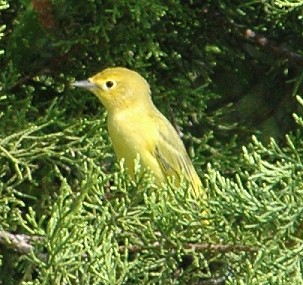 |
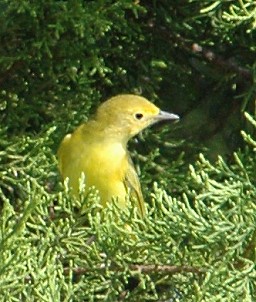 |
| When I saw this little yellow bird fly into the cedar tree, I thought it was a yellow warbler...but the yellow warbler photographed the day before had faint streaks on breast and sides. When I brought the images up in the computer, this bird had no streaks. | This picture shows even more clearly that there are no streaks at all. Not even a hint of streaks. So--even if this is the same species--it's not the same individual bird. Most yellow warblers--even the females--show some streaking, however faint. Of course every species has atypical forms, so it could still be a Yellow. What else could it be? Unfortunately, I did not get the views of wings and tail that might've made a definitive ID possible. I'd like to think it was a Prothonotary...but it's probably not. Still... |
![]()

